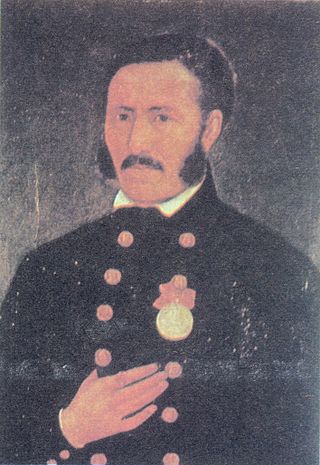
Stanislav Zippe (born 20 January 1943) is a Czech artist, painter and sculptor.

Stanislav Zippe (born 20 January 1943) is a Czech artist, painter and sculptor.
Stanislav Zippe was born on born 20 January 1943 in Hořice. He studied in art from 1957 to 1961. He deals mainly with creating sculptures and installations. He has been a member of several groups involved in arts activities creating kinetic sculptures, especially those that emphasize the relativity of space and using special effects such as crumbling in his works. In addition to creating sculptures and installations, he has also been involved in theatre set design and creating geometric abstract paintings. [1]
Gernot Zippe was an Austrian born German mechanical engineer and a nuclear physicist who is widely credited with leading the team which developed the Zippe-type centrifuge, a centrifuge machine for the enrichment and collection of Uranium-235, during his time in the Soviet program of nuclear weapons.
The year 2005 in art involves various significant events.

Assemblage is an artistic form or medium usually created on a defined substrate that consists of three-dimensional elements projecting out of or from the substrate. It is similar to collage, a two-dimensional medium. It is part of the visual arts and it typically uses found objects, but is not limited to these materials.
Events from the year 1965 in art.

Nová Paka is a town in Jičín District in the Hradec Králové Region of the Czech Republic. It has about 9,000 inhabitants.

Hořice is a town in Jičín District in the Hradec Králové Region of the Czech Republic. It has about 8,600 inhabitants.

Stanislav Kolíbal is a Czech artist and sculptor.

The Mánes Association of Fine Artists was an artists' association and exhibition society founded in 1887 in Prague and named after painter Josef Mánes.

Stanislav Libenský and Jaroslava Brychtová were contemporary artists. Their works are included in many major modern art collections, such as the Metropolitan Museum of Art and the Victoria & Albert Museum.
Zippe may refer to:

Entropa is a sculpture by Czech artist David Černý. The project was commissioned by the Czech government to mark the occasion of its presidency of the Council of the European Union, and was originally designed as a collaboration for 27 artists and artist groups from all member countries of the European Union. However, as a hoax, Černý and three of his assistants created a satirical and controversial piece that depicted pointed stereotypes of the EU member nations. Fake artist profiles were also created by Černý and his accomplices, complete with invented descriptions of their supposed contributions.

Stanislav Dospevski is the name assumed by Zafir Zograf, the son of Dimitar Zograf and nephew of the famed Bulgarian icon and mural painter, Zahari Zograf. He is a notable representative of the Samokov artistic school and one of the most important painters and icon-painters of the Bulgarian Revival. Dospevski is one of the first Bulgarians to have received academic artistic training.

Stanislav or Stanislaus is a given name of Slavic origin, meaning someone who achieves glory or fame. It is common in the Slavic countries of Central Europe and Southeast Europe. The name has spread to many non-Slavic languages as well, such as French, German, and others.

Stanislav Hanzík was a contemporary Czech sculptor. He is especially known for free sculptures, portraits, and realizations together with architects.

Marian Karel, is a Czech sculptor and university professor.